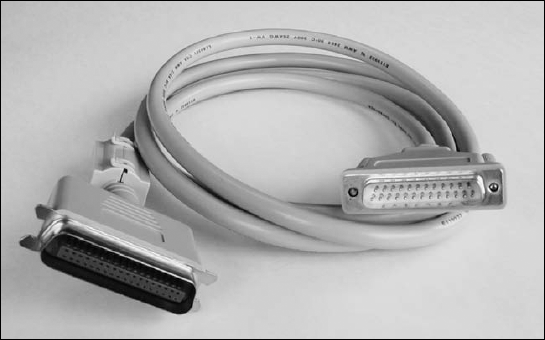5.3. Viewing Types of Printer Connections and Configurations
In this section, you find out how printers are connected to computer systems in order to communicate. The following are the most popular methods to connect a printer to a computer:
Parallel connections
Network connections
Universal Serial Bus (USB)
Serial
Infrared
5.3.1. Parallel connections
The most popular method for connecting a printer to a computer was, for many years, the parallel port. The end of the parallel cable that connects to the computer is a male DB-25 connector, and the end that connects to the printer is a male 36-pin Centronics connector. Figure 5-6 displays a parallel cable with the DB-25 and Centronics connector.
The maximum length of a parallel cable is 10 feet long. Any longer than that, and the cable runs the risk of crosstalk or data skew:
Crosstalk is electrical interference from other equipment, fluorescent lights, and other cables.
Data skew is the concept of the signals that travel down the different wires in the parallel cable not traveling at the same speed and thus arriving at the destination at different times. This results in the data being unreadable at the opposite end.
Figure 5.6. A parallel cable uses a 25-pin/36-pin connector on either end of the cable.

Parallel connections deliver data 8 bits at a time at a speed of approximately 150 Kbps. Parallel printers and their cables should conform ...
Get CompTIA A+® Certification All-In-One For Dummies®, 2nd Edition now with the O’Reilly learning platform.
O’Reilly members experience books, live events, courses curated by job role, and more from O’Reilly and nearly 200 top publishers.

